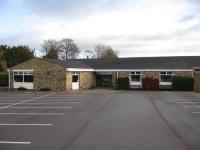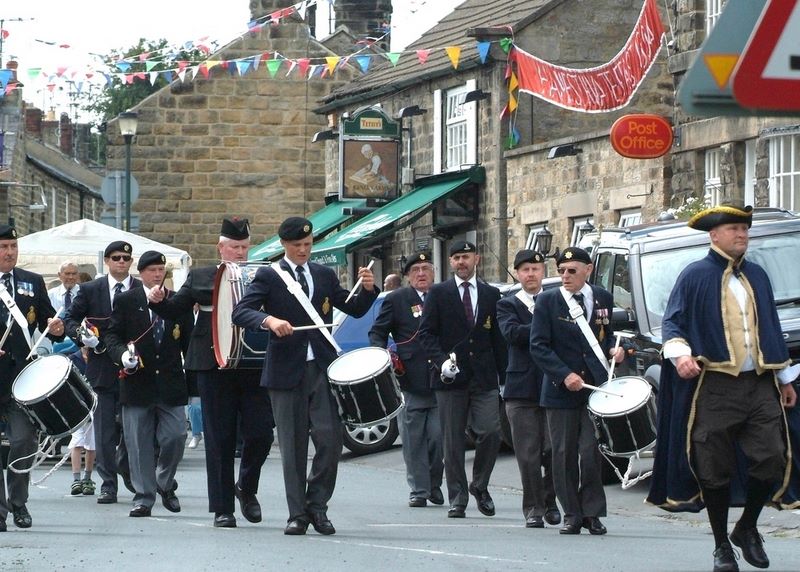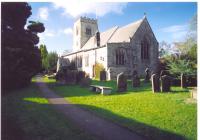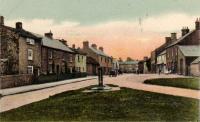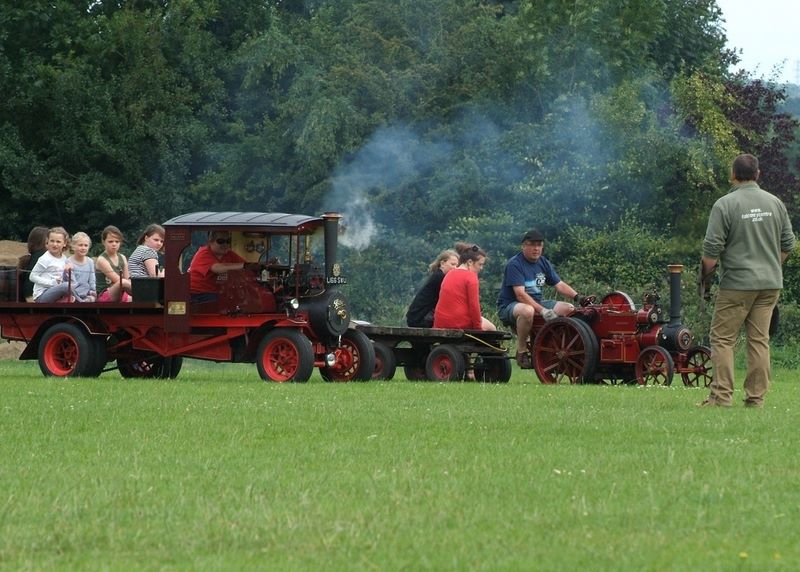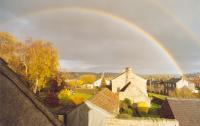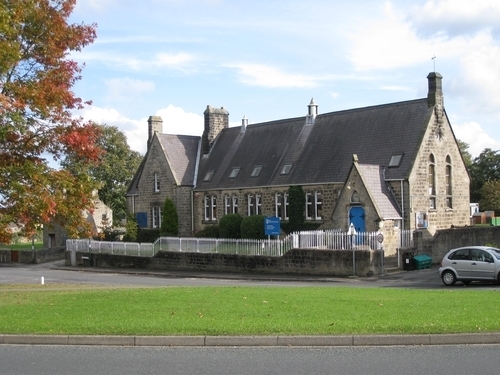-
Kids Can Do It
a crafting in cardboard and stripwood practical actvity day.
'standard' materials provided or bring your own.
pre-printed designs and patterns available to prepare at home first.
adults and teens welcome if accompanied by Under Year 7's they're helping
cafe open for teas, coffee and biscuits
-
From a website comment by Mr Derek Barker:""My father Jim Walker formerly a gas meter reader was born in a cottage adjacent to the church gates. Unfortunately I do not know which one of the pair he was born in. As a child he used the chair shown in the photographs. My father who passed away in 2004 told me that it was made from oak taken from Hampsthwaite Church. I make no claims as to its provenance but there is just a chance that it was made by Peter. The Teddy which gives scale to the chair is over 100 years old and belonged to my father in law Arthur Myers of Stubhouse Farm (Emmerdale site) in Harewood Park."
-
THIS COMING WEEKEND 21st and 22nd JUNE!I am delighted to announce that 38 young soldiers from22 Platoon at the Army Foundation College will be hosted here todo 'good works' around the village towards their Duke of Edinburgh Award.Please welcome them, thank them, and if you wish, join them!They will be working 1030hrs - 1530hrs around Feast Field on Saturday,followed by Memorial Hall then Village Centreand ending at the churchyard on Sunday.Our Community PayBack Team have kindly loaned several gardening tools,we have sourced others, but if you are able to loan any, especially clippers,trimmers, shears, forks or half moons etc. that would be very helpful.Please label them bring along to leave in the Memorial Hall Foyer
-
Local planning authorities need to regularly identify and update their supply of sites for housing development as part of their adopted local plan. North Yorkshire Council is currently drawing up a new county wide local plan and a new consultation (Issues and Options) is about to begin.
-
Our Memorial Hall was built to honour the fallen in two world wars and give thanks to those who returned. It is appropriate therefore that we play our full part in the national celebrations and village activities are planned for May 8th VE-Day and Saturday May 10th 2025
-
Remembering Hampsthwaite’s Blind Joiner - an article by Shaun WilsonLike the market town of Knaresborough, who had ‘Blind Jack’ – John Metcalf, the road builder of Yorkshire in the eighteenth century, the small rural village of Hampsthwaite had it’s blind hero also, almost a century later – Peter Barker who became known as ‘The Blind Joiner of Hampsthwaite.’ Though there are some similarities between John Metcalf and Peter Barker’s lives, these are purely co-incidental and each fulfilled a life, character and career in their own right.
-
Arsenic Poisoning in Hampsthwaite - The Execution of Hannah Whitley
In 1789, Hannah Whitley of Hampsthwaite used a pie as the delivery medium for a fatal dose of arsenic, with the poison concentrated in the crust. She claimed She had been coerced into the act of poisoning by her employer, a local linen weaver named Horseman, who was involved in an on-going feud with the intended victim.
-
JANE RIDSDALEAged 33 years, born at Hampsthwaite, near Harrogate, Yorkshire, her height is 31 ½ inches.She is remarkably chearfull & enjoys very good health.Published July 1st 1807 by Jane Ridstale, at Harrogate where purchasers of this Print will have the opportunity of seeing and conversing with her
-
Joshua Tetley was the founder of Tetley’s Brewery in Leeds, and he retired with his wife Hannah to Hollins Hall on the outskirts of Hampsthwaite (Hollins Hall Retirement Village).
-
SCRUBBERS & STONES - Sat 29th June 10.30am - 2.30pm - Entry FREE!
Explore the Memorials at St Thomas a'Becket
Memorials Treasure Trail - for children if all ages
Self-Service / Self-Checkout BBQ from 12 noon (inc. veg option) Food £2, Drink £1, Donations? - yes please!
Hot & Cold Drinks
Laptop & Screen to show Mapping Hampsthwaite’s Past
Use a Bucket & Brush to help reveal Inscriptions on the older memorials
. . . or just Sit & Enjoy CORPUS CHRISTI BRASS BAND . . . from 11.30am
. . . followed by Afternoon Tea & Cakes at the Memorial Hall!
© DT Online 2010 - 2025
| History of Hampsthwaite
The earliest written record of the settlement (circa 1180) is as “Hamethwayt” in the Early Yorkshire Charters.
The name 'Thwaite' comes from the Old Scandinavian word 'thveit', meaning 'clearing, meadow or paddock' and Hampsthwaite could mean the thwaite, or meadow, of Hamr or Hammall, or simply from Heim, meaning home, but it is almost certainly derived from the Old Norse Homp, 'land bordering on a river and liable to flooding' (an alternative possibility was put forward that the name 'Hamps' may derive from the Middle English, 'Hanespe', which means 'summer dry', or dry in summer but this would be an unlikely combination of Old Norse and Anglo Saxon).
Records show that flooding was indeed a feature of the River Nidd, which runs through here, although the Roman road from 'Olicana' (Ilkley) to 'Isurium' (Aldborough) crossed the Nidd at Hamps-thwaite and this led to the development of a market. Hampsthwaite was situated within the Forest of Knaresborough, which was established as a royal hunting preserve in the time of the Conqueror. The church of Hampsthwaite was in existence soon after the Norman Conquest and was at one time in the possession of the monks of Knaresborough.
The family of the writer William Makepeace Thackeray lived in Hampsthwaite, as did the family of Amy Woodforde Finden (1860-1919) who was best known as the composer of “Kashmiri Song” from The Four Indian Love Lyrics by Laurence Hope. In the churchyard are the graves of Joshua Tetley, the founder of the Tetley's Brewery in Leeds, and his wife Hannah; Jane Ridsdale, who died age 58 but only 31 ½ inches tall; and Peter Barker, the blind joiner of Hampsthwaite.
Click here to subscribe to Hampsthwaite Village History and receive an email each time new materials are posted
History of Hampsthwaite The earliest written record of the settlement (circa 1180) is as “Hamethwayt” in the Early Yorkshire Charters.
The name 'Thwaite' comes from the Old Scandinavian word 'thveit', meaning 'clearing, meadow or paddock' and Hampsthwaite could mean the thwaite, or meadow, of Hamr or Hammall, or simply from Heim, meaning home, but it is almost certainly derived from the Old Norse Homp, 'land bordering on a river and liable to flooding' (an alternative possibility was put forward that the name 'Hamps' may derive from the Middle English, 'Hanespe', which means 'summer dry', or dry in summer but this would be an unlikely combination of Old Norse and Anglo Saxon).
Records show that flooding was indeed a feature of the River Nidd, which runs through here, although the Roman road from 'Olicana' (Ilkley) to 'Isurium' (Aldborough) crossed the Nidd at Hamps-thwaite and this led to the development of a market. Hampsthwaite was situated within the Forest of Knaresborough, which was established as a royal hunting preserve in the time of the Conqueror. The church of Hampsthwaite was in existence soon after the Norman Conquest and was at one time in the possession of the monks of Knaresborough.
The family of the writer William Makepeace Thackeray lived in Hampsthwaite, as did the family of Amy Woodforde Finden (1860-1919) who was best known as the composer of “Kashmiri Song” from The Four Indian Love Lyrics by Laurence Hope. In the churchyard are the graves of Joshua Tetley, the founder of the Tetley's Brewery in Leeds, and his wife Hannah; Jane Ridsdale, who died age 58 but only 31 ½ inches tall; and Peter Barker, the blind joiner of Hampsthwaite.
Click here to subscribe to Hampsthwaite Village History and receive an email each time new materials are posted
|




